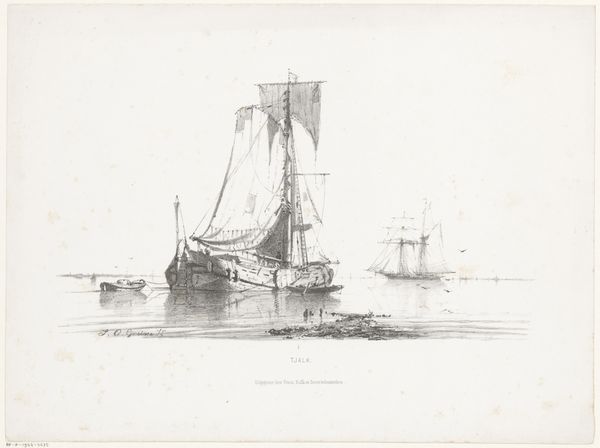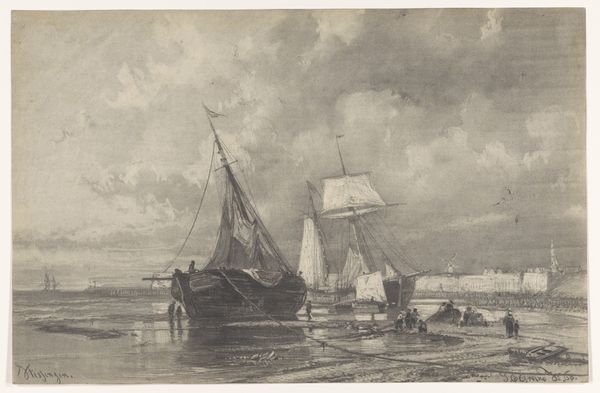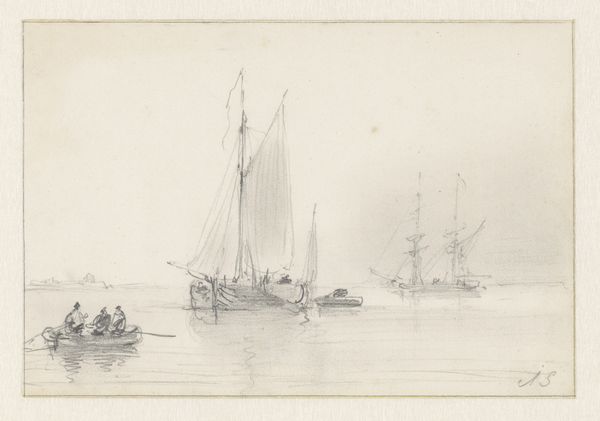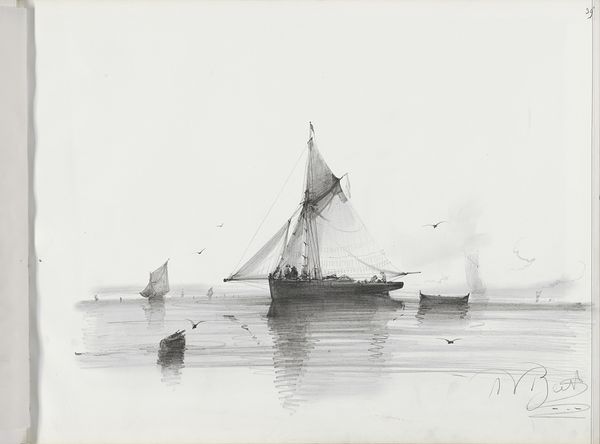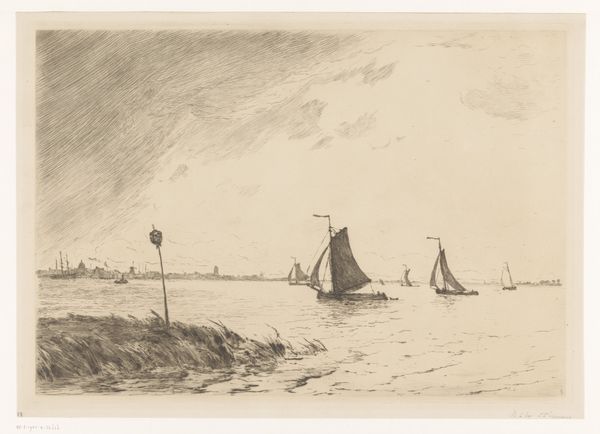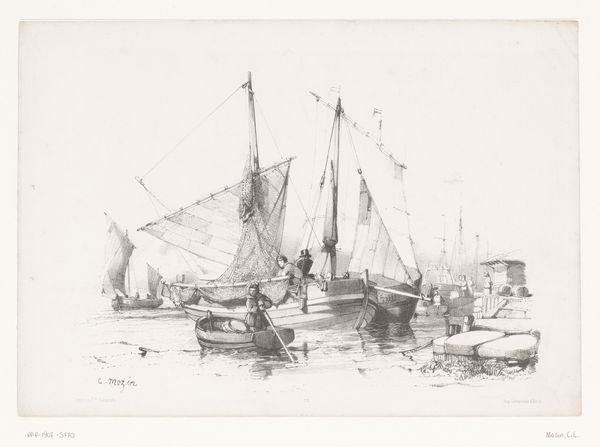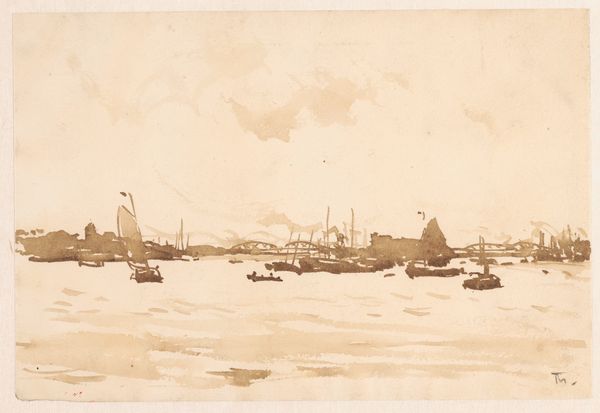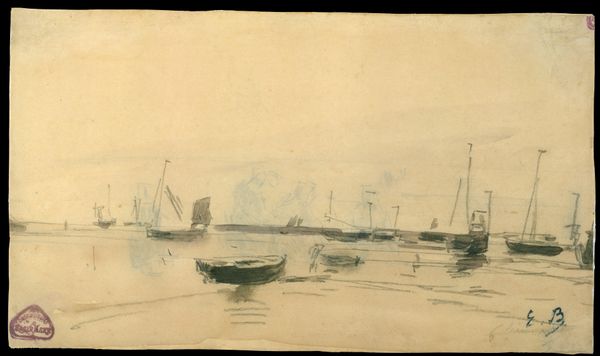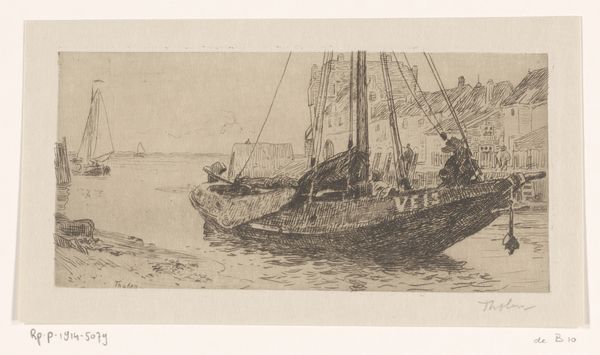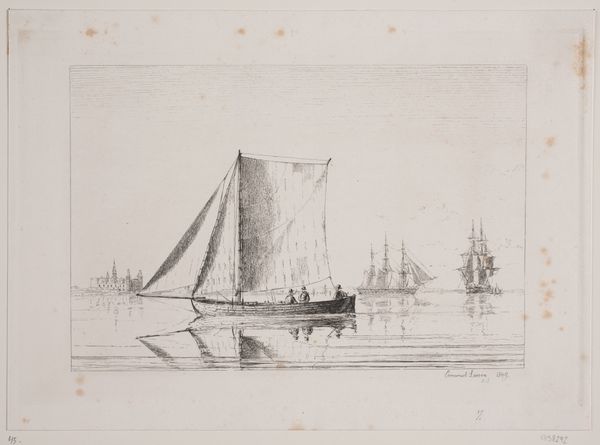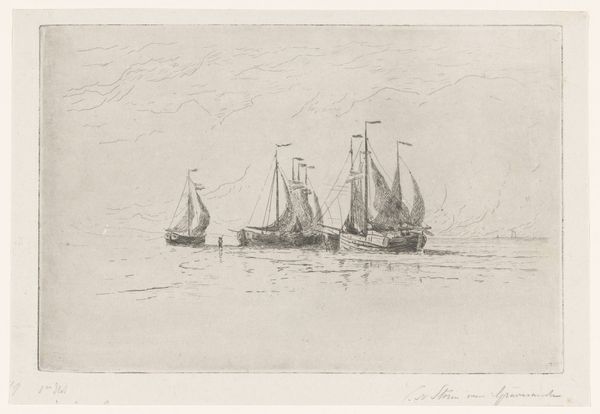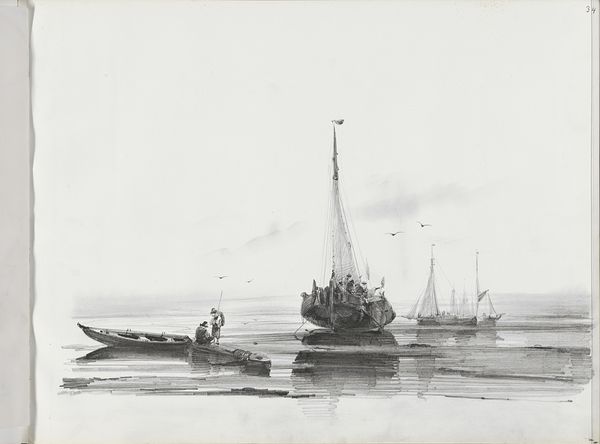
Dimensions: height 193 mm, width 261 mm
Copyright: Rijks Museum: Open Domain
Editor: So, this is "Twee schepen op een kalme rivier"—"Two Ships on a Calm River"—by Andreas Schelfhout, made sometime between 1797 and 1870. It's a pencil and watercolor drawing. It has this wonderfully quiet mood...a calmness. What do you see in this piece? Curator: Well, this tranquil river scene offers a glimpse into 19th-century Dutch society and its relationship with water. Notice how the ships aren't engaged in trade or warfare, activities often depicted in maritime art. Editor: Right, they're just… there. Curator: Precisely. This reflects a shift in the public's perception of the sea, from a source of livelihood and conflict to a space for leisure and contemplation. The burgeoning middle class had the time and resources to enjoy such pursuits. This also shows how the art market was shifting, becoming open to different representations. Editor: So the *subject* of art was shifting, because *society* was? Curator: Yes! Schelfhout helped make the landscape a saleable genre, depicting the Netherlands as attractive. Are these idealized scenes, or do they give a "true" depiction? Editor: I'd guess idealized. It’s too…peaceful. But I also understand the appeal—the pencil sketch and delicate watercolors would have been easily portable and reproducible for commercial distribution. Curator: Exactly. These works provided affordable glimpses into a desirable lifestyle for a wider audience, thereby constructing an appealing image of the Netherlands itself. Editor: I hadn't thought about how a drawing like this could play a part in shaping a national identity, or appeal to social status. Curator: Precisely, and reflecting upon the commercial value adds another dimension. Art exists within an economy, whether we like it or not.
Comments
No comments
Be the first to comment and join the conversation on the ultimate creative platform.
